The 50 States Project is a series of candid conversations with interior designers across the country about how they’ve built their businesses. This week, Cincinnati-based designer Julie Anne Baur of Winding Lane Interiors tells us why she implemented flat fees for design and project management, how she’s delegated most client communications to her team, and why she still carves out time for two-hour consultations.
What pushed you to launch your own firm?
I always had an interest in interior design, but growing up in South Florida, it wasn’t a “real” job. We didn’t really have experience in that world—my mom thought it was throwing pillows around and didn’t really get it. I was a good student, so I went off to Vanderbilt [University] to get a liberal arts degree. I met my husband in college and we got engaged my senior year, after he had already graduated. That was not part of my plan, but when you meet the person, that is that. He was from Cincinnati, so I agreed to move here with him after graduation, but I was like, “I’ll give you five years.” But then I fell in love with it here. He actually ended up having several job opportunities [that would take us out of the Midwest] and I was the one who kept being like, “No, I want to stay.” I feel so much more at home here than I ever did anywhere else.
I started grad school at Xavier [University] once we moved here to get a master’s degree and certification in teaching English, and I did that for four years. Then I was home for almost 10 years with our three boys—two are now in college and one is going to be a high school senior. And during that time, people would ask me, “Can you come over and help me with this, this and this?”
When my youngest was in his last year of preschool, I knew I wanted to get back to work, but I didn’t want to go back to teaching—it wasn’t my passion. And finally I told my husband, “I want to go back to school for interior design.” He was so supportive, but suggested that I work in some aspect of the field first to make sure, so I ended up getting a job at a local high-end antiques and interiors store. The store also did some in-home design, and people started coming in asking for my advice and suggestions. The owner saw that I had an eye for design and started working with me on some of the in-home projects. After another year of that, I knew it was time: I thought, “I have an eye for this. I have a passion for it. And people are asking for me.” So I kept working there part-time and I went back to school at the Art Institute of Cincinnati. I was in my mid-30s and I still had three little boys at home, so I slept all of about two hours a night!
What was your first solo project?
I had a friend from church who had come into the shop a few times and knew that we did design work. But she called me separately and said, “Can I hire you to do my design?” I said, “Sure, come on in to the store.” And she goes, “Can I just hire you?” I did that job while I was in design school, and working with her gave me so much confidence. She was always telling me, “You are really underselling what you can do, and you’re so good at this.” That helped propel me when I was thinking, “Oh, my God, I’m too old for this,” or “Gosh, I’m so tired.”
On July 9, strategist Ericka Saurit, in part two of her Social Storytelling series, dives deeper into the visual side of self-promotion, dissecting how your Instagram feed, stories and content work together to deliver a cohesive, scroll-stopping message about your unique design brand. Click here to learn more and remember, workshops are free for BOH Insiders
We want to hear your thoughts! Take BOH’s annual reader survey, an 8-minute questionnaire that helps us get to know you better and will allow us to tailor our storytelling to your business needs.
I started incorporating Winding Lane Interiors in 2014, just as I was finishing school. When I started out, I was taking on anyone as a client—and to be honest, it was mostly people who had been to my house, because we used to host a lot of fundraisers for our kids’ schools. People would ask, “Who’s your designer?” and I got better at saying, “It’s me!” Slowly but surely, word-of-mouth grew and the projects got better and better. I started learning how to charge, and how to really run a design business.
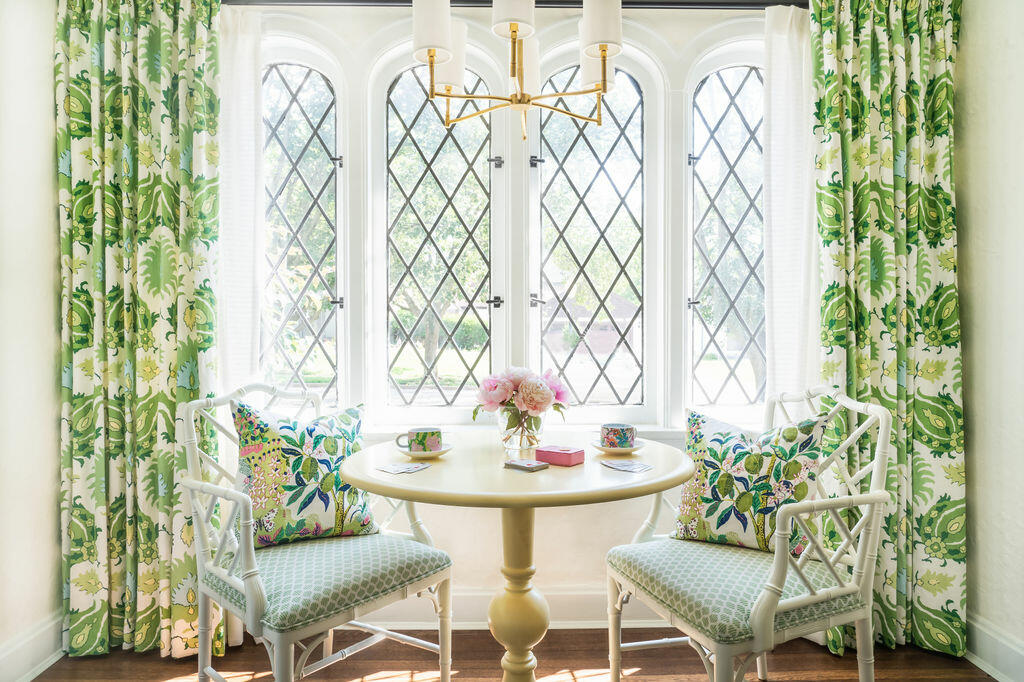
When did you start growing your team?
Four or five years in, I hired someone who was a combination of design assistant and project manager. And then a few years later, as our projects got bigger, I realized I needed to make another hire. I had been running the business out of my sunroom until then, so that’s when we moved into a small studio in the neighborhood. That’s when people started taking it more seriously.
My design assistant decided to go back to being a full-time mom, so I made two hires at that point: a designer/project manager and an operations manager. It’s been a game-changer to have those two roles, and it really frees each of us up to do what we do best.
How do you delineate each of your roles?
Our designer/project coordinator, Amanda, is very personable and chatty, and I’ve assigned her most of our client communications, including a weekly email update every Wednesday. And then Jen, our operations manager, does all the client communications related to scheduling, as well as all the vendor communications. That means that unless someone needs to talk to me, I don’t have to constantly be on the phone or sending emails, or even running around to pick up this and drop off that. It’s really enabled us to grow.
What kind of growth do you imagine for the firm?
I never planned to have employees, or really to grow the firm beyond me. Last year, we brought on our fourth hire: She was our photographer, and now that she’s full-time she’s doing our social media as well, which has been a wonderful addition. But four of us is big enough for me—this is it!
So many designers I’ve talked to are hesitant to delegate client communication. What made you feel comfortable handing that off without fear?
I want to be the lead on each design project. We collaborate on every project, but I still oversee the design direction—that is so important to me. But with the hires that I’ve made in the last five years, they are absolutely representative of what I want our firm to be. And it wasn’t like they came in and took that over right away. It was several months before I went, “Wow, you’re really good at this. How would you feel if we added this to what you do?” They get the goal, which is not just that the designs are beautiful, but that our clients feel like we care.
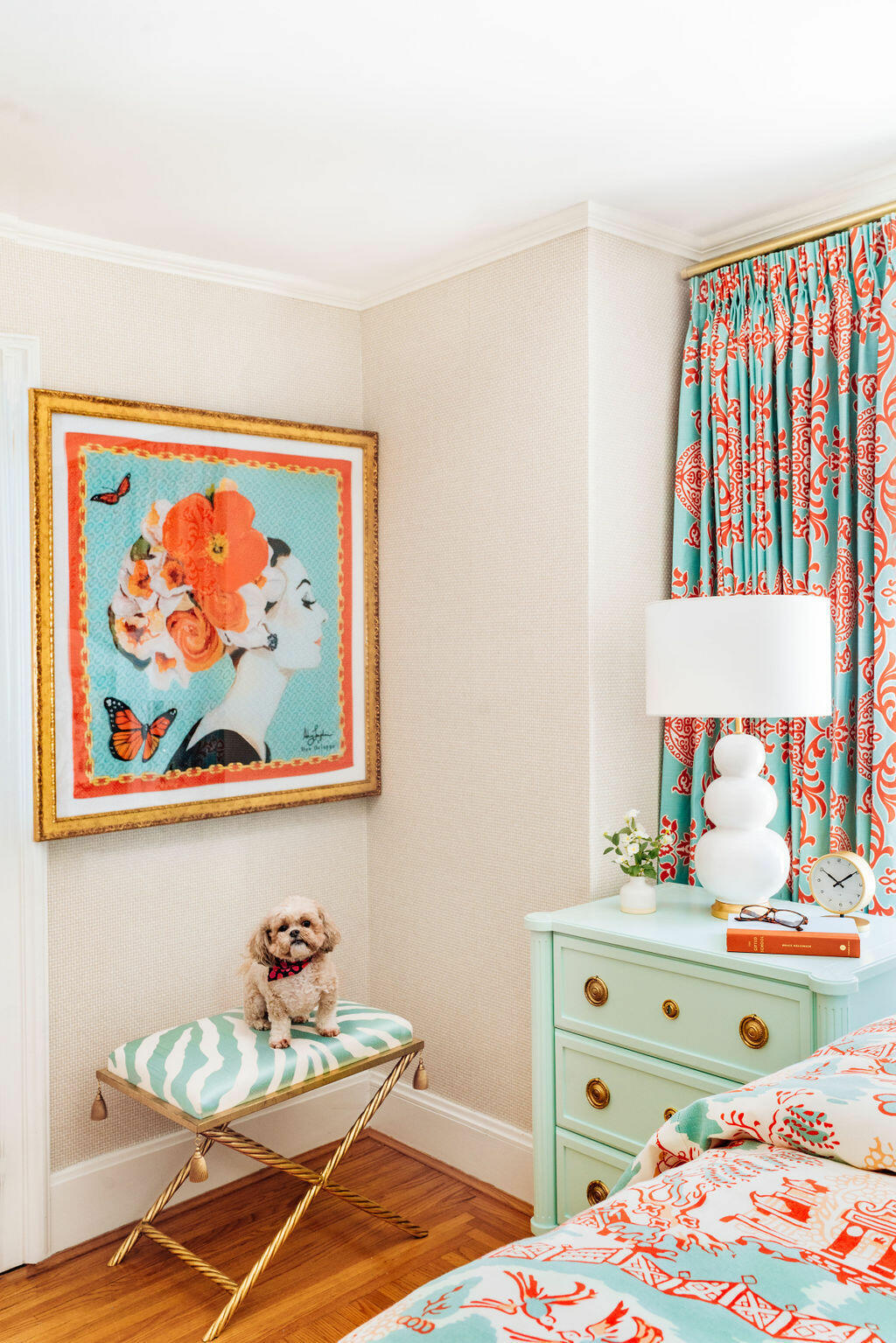

Tell me about your design community.
As of two years ago, we’re in a beautiful [new] design studio about half a mile from my house, right in the historic [part of] Hyde Park. I mean, I can walk to work if I wanted to, but I usually have heels on, so I don’t. I made sure I found a space where we could have a pretty shop window in a part of the neighborhood where people walk and jog by, and there’s a coffee shop across the street. We change that [display] out quarterly, even though we’re not a store, and it draws people in. We’ve also started hosting a lot of events. Next week, we’re having an art show featuring a local artist we work with a lot—it’s going to be a cocktail party, and people can come in and pick out a bouquet of flowers from the artist’s yard, and she’s going to have her art on display. We feel really connected to our community, which is important to me.
Even though it’s a city, Cincinnati also feels like a small town in a lot of ways—or like every neighborhood is its own small town. You know, other than Chicago, the Midwest often gets overlooked, but there’s actually so much beautiful design here.
Can you tell me about the local resources in terms of how you source, how you shop?
We do have a design center here. And in my early days, there were two, three main showrooms there. I appreciated so much of what I learned there, and the opportunities and the resources. After a couple years, I started going to High Point Market and I realized that the more resources I could find and have access to myself, the more I was able to spend my time designing instead of running back and forth and borrowing something. We still do use our design center sometimes, but we also created our own [resource library] in the studio with samples from the lines we use the most. We also started doing enough volume that I could have stocking-dealer accounts with some of our most-used lines, which is more profitable for us, and it has given our clients a better value.
Locally, we have a phenomenal rug dealer, called Fazel Rug Gallery, [and the owner’s] family has been in the business for many, many years. He has an encyclopedic knowledge of rugs. There are thousands of rugs in his store at any given time and he knows exactly—I’m not kidding—the size to the inch and price and year of every single rug in there. He’s also the nicest man I’ve ever met. We also shop at The Rug Gallery, especially for cut-to-order rugs and wall-to-wall carpets. They’re also a family-owned business, started 50 years ago in Cincinnati; now the second generation is running it and they’re lovely. And then some of our local vendors and artists—I love Karen Rolfes and Bley Hack. We really try to support local and regional businesses as much as we can. I like knowing that a product is made ethically, that the people are treated well, that they’re paid well. It all goes back to that community.
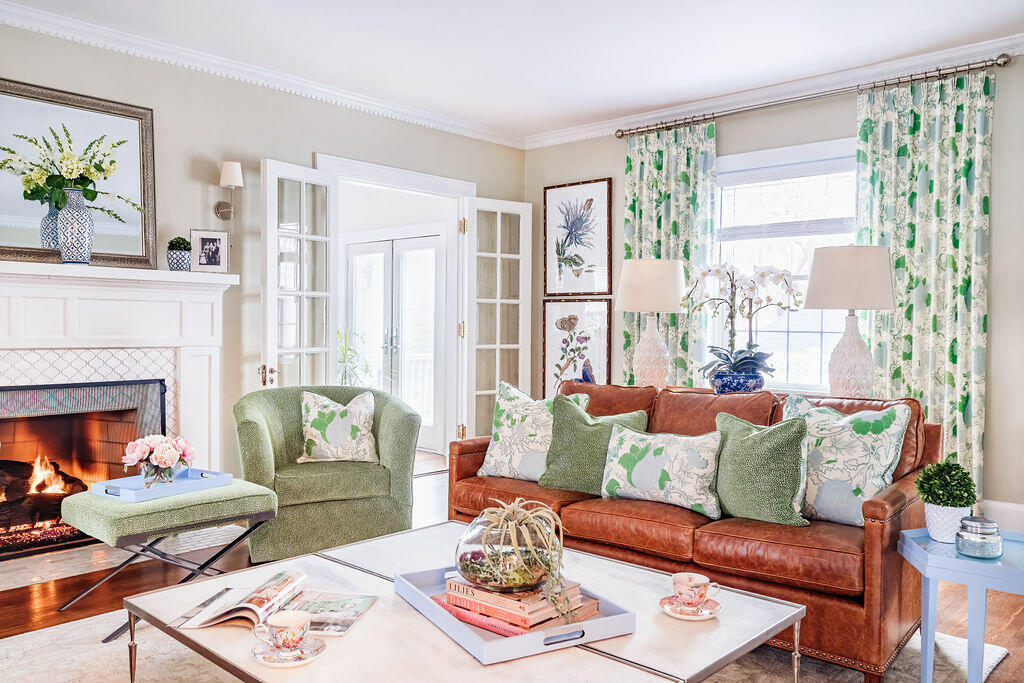
When you look back, what has tested you most about being an entrepreneur?
I had zero business experience. I’ve been at this for 10 years and I’m still finding things that make me say, “Oh, this is the way I should have done this.” Luckily, I hooked myself up early on with a really good bookkeeper—she doesn’t do the day-to-day stuff, but she does the back-end work, which has helped a lot.
I know it’s not just me—I’ve talked to a lot of great designers who I thought were just killing it, and they’ll be like, “Oh, I haven’t turned a profit in four years.” I’m like, “Wait, what?” Like, I’m sending kids to college—my business has to be very profitable. It has to be! And so if people are not turning a profit and paying themselves within a couple of years, then take some classes or get a business coach, because you should be able to make a good living as an interior designer.
You mentioned learning as you went when it came to things like how to charge. What has made the most sense for your firm?
I started out with a low hourly rate, I think it was $40 an hour. I did that because I knew that even if I had a good eye and could make my own house look beautiful, I was not going to be efficient in the beginning. I charged less so that people would get the value that they were expecting. Within a few years, I started getting more clients and started raising my rate—first to $75, and then up from there. You always know it’s time to raise your rate when you have too many clients and not enough time. And by that time I was efficient: I had good furniture resources and I had developed relationships locally with great wallpaper hangers and painters—all the people who make you look fabulous.
We charged hourly until just a couple years ago. That’s when I started realizing that the thing I hated the most about being an interior designer was tracking my hours. It was the bane of my existence—not just because of logistics, but because I don’t like asking for money at the end of a project. I also didn’t want clients thinking, “I have a question, but if I call, that’s going to be 15 minutes of time.” If someone wants to say, “Can you pop over? I’m concerned that the painter is using the wrong color of paint”—whatever the thing is, it is our job to run the project smoothly, and I didn’t like having to bill people for every single thing. But if I didn’t, we weren’t making money.
A few years ago, I finally felt like I had done enough projects that I could accurately figure out a flat fee in advance. So that’s what we do: We flat-fee on the front end for design, and we flat-fee on the back end for project management.
It’s not a [one-size-fits-all] fee, like, “This number times 15 because there are 15 rooms.” Depending on the scope, some rooms are going to be much more expensive, and we take quite a bit of time now upfront figuring out how much time we are realistically going to be spending on each space—for design and for project management. Like, are we doing built-ins in here? Are we going to have to be on-site a lot? Are we going to have to source things that are outside of our normal wheelhouse? Are we going to need to go antique shopping? How much time will we spend overseeing the trades? After we’ve walked through a project, we present those fees at our very next meeting—before they’ve officially signed a contract.
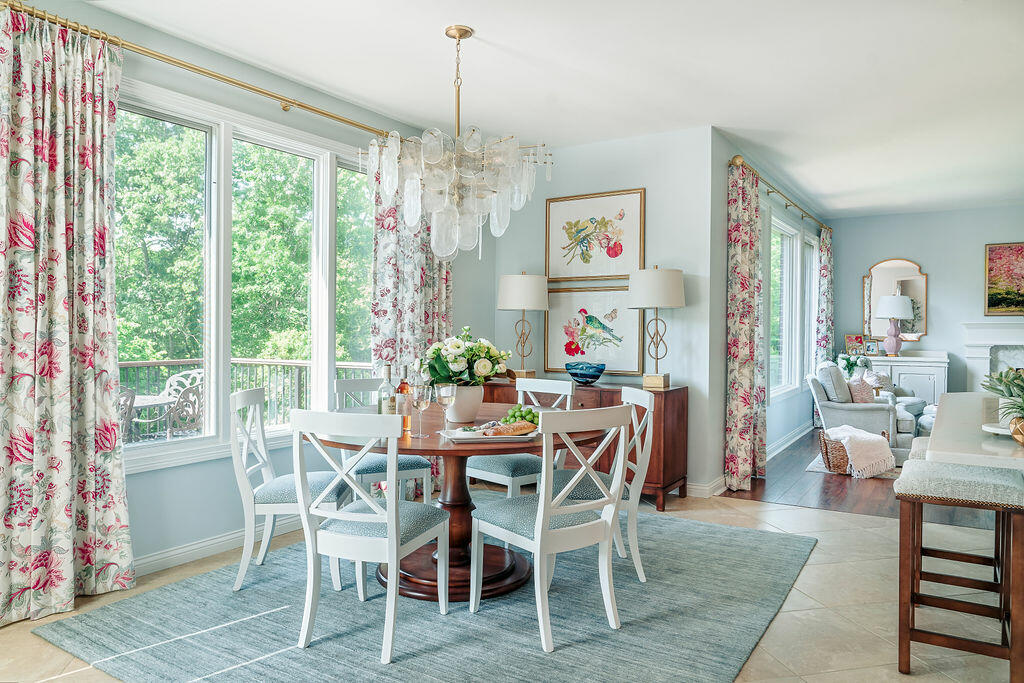
Where in the design process do clients pay those fees?
The design fees are due when they decide to sign on for the project, and then the project management fees are due after the design presentations and approvals.
Until recently, clients would have to pay the installation costs at the end—all of the things that we couldn’t possibly know in advance, like fees charged by the vendor for the installation of the hardware and hanging the art. On a $300,000 project, they might owe us $2,000 at the end. And OK, that I didn’t mind asking for, because it was very specific. But I came up with a fix for that as well: We now estimate what those costs will be based on the size and scale of the project, and then we take a retainer for it. The goal is that either they owe us nothing at the end, or we give them money back—and let me tell you, clients love that. They’ve just spent a half a million dollars on a project, and then we write them a check back for $2,000. It has been so well received.
How are you billing for the product itself?
We charge our clients either at or below retail, while still making money on the product. That’s what allows us to cover any potential costs [like damage]—that doesn’t happen often, but it does happen—and to have some margin for the company. We try to be really good stewards of our clients’ money and be respectful of their budgets, but they also have to understand that we have to remain a profitable business.
Is there pushback on that?
Not anymore. Early on, [there was, with] clients that wanted an interior designer but didn’t necessarily have the budget for it—and that was fine because I was a new interior designer. But at this point in our [business], we really deal with projects that meet our minimum budget of $35,000 [per room].
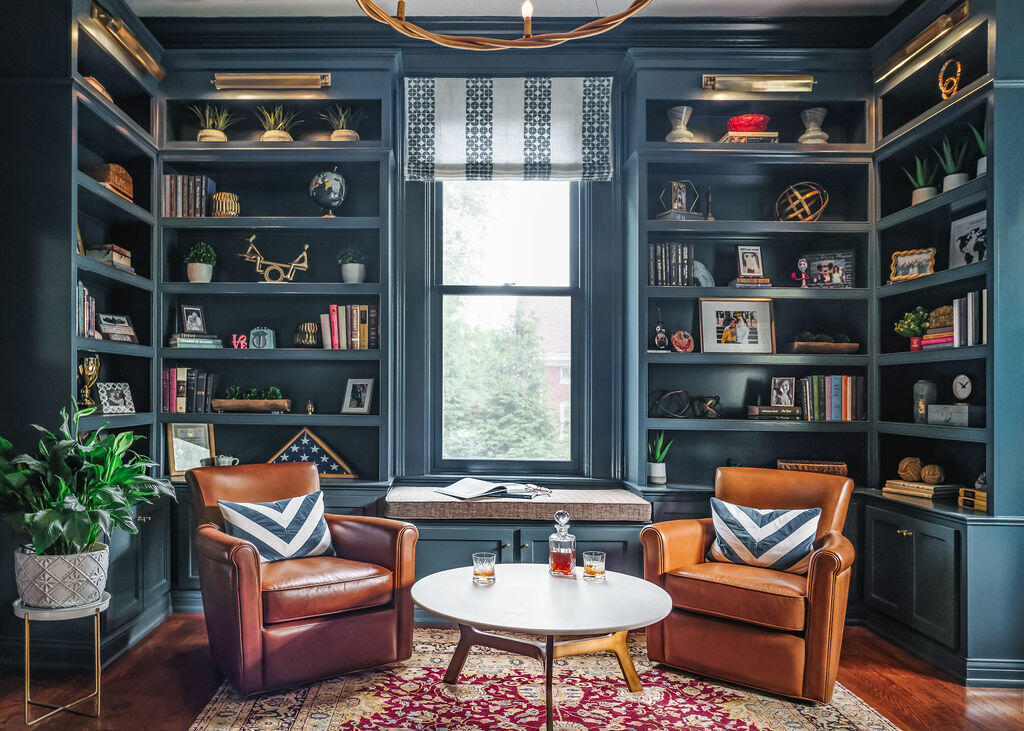
Giving back has been a big part of your business. Can you tell me about that?
Even though we do mostly full-service, full-scale projects, we still make time to do at least one two-hour [in-person] design consultation a month. We charge $2,000. At first maybe that sounds like a crazy amount of money, but it’s not. They get two designers. We prep in advance, then we go to their home and walk through every space they’re focused on, photographing it and taking extensive notes. We make very detailed recommendations, then come back and spend several hours typing up our notes and adding any links to places that they could purchase the type of things we’re recommending. We provide them a completed roadmap for how they can go about doing what they want to accomplish on whatever budget they want to accomplish it in, on the timeline that works for them.
That’s an amazing service.
Sometimes those clients will come back a couple years later and they’ll be like, “We tried to do this ourselves and we just can’t, and we really want to hire you full-service now.” Great. We love that. But a lot of them never [hire us later] and they’ll still send us pictures, saying, “Look how this turned out. We would never have thought to change the whole floorplan to swap these rooms and put this here. We didn’t know that this chandelier was too small and the lighting is better.” And that is so rewarding to us.
I got into design initially because I was always affected by my aesthetic environment. I was a very sensitive little kid, and if a room was beautiful or comfortable or welcoming, I felt at peace in it. If a room was cluttered, or the colors were terrible, or it was off—not that I was judging the [financial value] of it—I would feel stressed and uncomfortable. Even in my parents’ house, I was constantly seeking to make things feel right. To know that we can do that for clients who genuinely can’t afford a full-service project is exciting to me.
I have also been deeply involved for over 10 years with our local furniture bank, New Life Furniture Bank. We can say to our clients when they’re getting new furniture, “May we connect you with New Life Furniture Bank and schedule a pickup if you’re not sure what to do with your old furnishings?” It’s a really cool organization.
They started hosting an annual challenge where designers would take an old piece sourced from their warehouse, redo it, and then they’d auction it off at a gala. And then about five or six years ago, they started a program called Design With a Heart [where designers are matched up with a family in need in order to provide free design services]. It is one of the most rewarding and exciting things I’ve been a part of. It also is exactly why almost any really good designer is in this career, because we want people to feel so happy and comfortable in their homes.
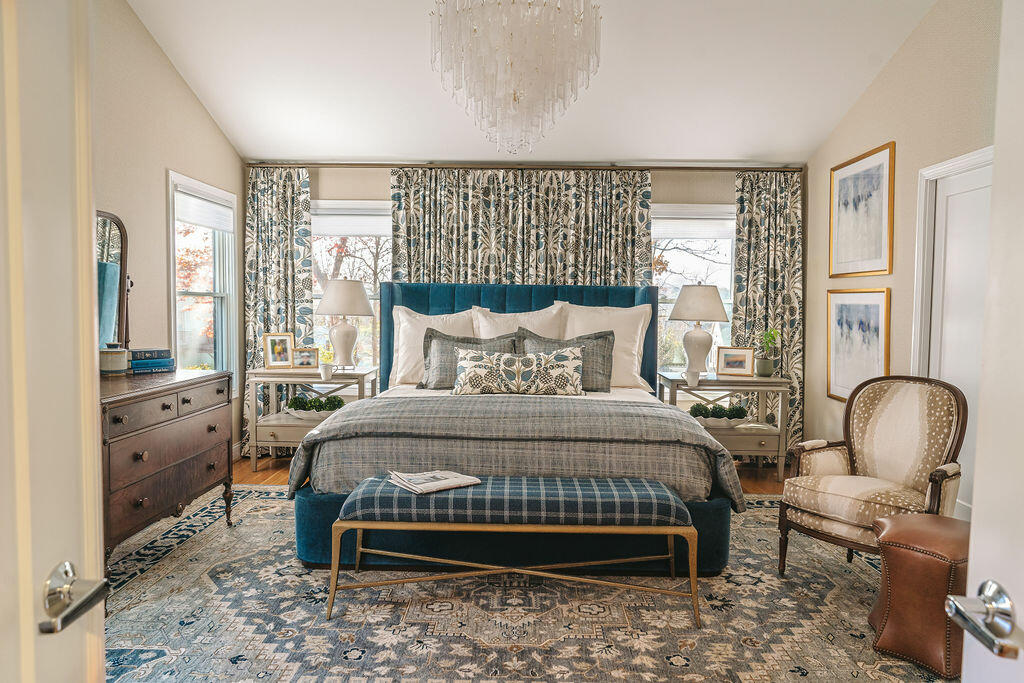
What does success look like for you today?
Success to me is exactly where I am right now. I get to go to work every day with three women that I genuinely care about that are so good at what they do. We have fun together, we make beautiful things, and we are an efficient and well-oiled machine at this point. I feel so lucky to get to enjoy what I do every day. It doesn’t mean that there’s not ever a bad day, or that something doesn’t go wrong, but I love what I do and I feel really good about it. And then I also have a record of what I’ve done, thanks to Krista, our photographer. We make books for our clients at the end with the before-and-after pictures, and getting to see that makes me feel so happy. And the more money we make as a firm, the more we can support some of our local nonprofits and vulnerable people in our community, which is really important to me.
Success is also that my kids get to see me take a hobby and turn it into a real business with employees who I can afford to pay and who also love what they do—for my sons to see the results of hard work and what women can do. It’s also important to me that they get to see what it’s like when you love what you do, when you find something that you’re passionate about, and you’re good at it, and you try to constantly get better at it. That sets a really good example for my children, and I feel really proud about that. I mean, there are always more things I want to accomplish, but I really feel good about where we are right now.
To learn more about Julie Anne Baur and Winding Lane Interiors, visit her website or find her on Instagram.




























